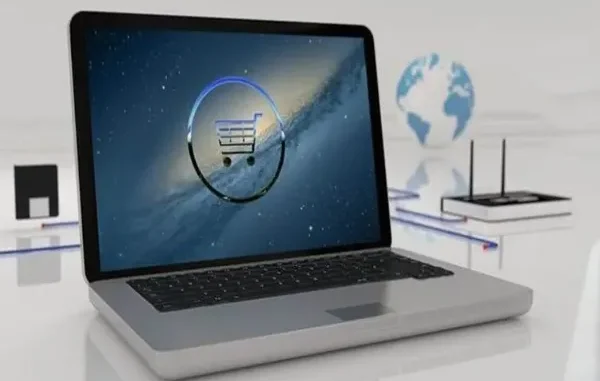
Thinking of moving from SAP Commerce Cloud to Shopify for your ecommerce store? It’s a big step, but it is one that more and more businesses are making with good reason.
Shopify is renowned for its scalability and many apps that automate your ecommerce business.
However, if you are making this transition from a system that is complex to something far less rigid, Shopify, it’s not as easy as just jumping in and hoping for the best. You need the right plan to avoid data losses, operational chaos, or, worse still, being left with a store that doesn’t work properly.
A successful transition from SAP commerce cloud to Shopify needs careful planning. You need to consider how everything you’ve got currently will map across, what things you want to change along the way, and, most importantly, how to avoid those common pitfalls.
Let’s review some important steps to make this transition as smooth and successful as possible.
1. Understand Your Current Setup
Before you start your migration, it is vital that you first get to know your SAP Commerce Cloud store. This not only refers to the products and categories you have but also the actual data structure, integrations, and existing customizations.
First, jot down what data you will need to move: your product information and assets, customer data, order history, and any extra features you may have configured in your SAP shop. Some of those are managed differently in Shopify, so you will need to decide if you want to migrate them for like or improve on that.
Then, think about all the e-commerce third-party integrations and plugins that make your business tick. Custom APIs, payment providers, CRMs, or inventory management might work with SAP Commerce Cloud and not with Shopify.
Be sure that these are supported or find a suitable replacement.
2. Craft a Migration Strategy
Once you know what you have, it is time to think about how to get from where you are today to where you want to be with minimal downtime and disruption.
Start by picking the right migration option. You can either do it yourself using an online guide or hire the SAP commerce cloud for the Shopify migration service that truly moves everything over.
It is recommended to opt for migration services as these services have a powerful team of dedicated professionals with unmatched domain expertise for a smooth and effortless migration process.
Next, you should test the migration in phases; do not try to move everything together, but rather start with small sets of data being moved and validate if they are right. This will help catch failures sooner and fix them when it is still easy.
3. Design Your New Storefront
A migration isn’t just a technical shift—it’s also an opportunity to improve your store’s design and user experience. Shopify offers a wide range of themes and customization options that can give your store a fresh, modern look.
First, choose a theme that fits your brand. If you want to maintain the look of your old shop, this may involve customizing an existing theme or working with a developer to port over specific design elements. Shopify’s theme editor lets you make many changes without writing any code.
Think about whether you need to optimize for mobile shoppers. All Shopify themes are responsive, but it’s still a good idea to test how your store looks and performs on different devices. Since most people browse and buy on their phones, mobile performance is crucial.
Consider the user journey. You want to make sure your store’s navigation, search, and product pages are set up in a way that makes sense for the shopper. Take a look at how your old site was set up and update it as needed to create an improved experience.
4. Integrate Essential Systems
Your online store doesn’t exist in a vacuum. You have other systems and platforms that manage payments, inventory, customer service, marketing, etc. Be sure those systems will work well with Shopify along the way.
Check if the payment gateways you currently work with are supported. Shopify works with many types of payment providers, but some may not be available in your country. If you need to use another provider, get it working and test everything in advance.
This also applies to inventory management. If you work with SAP Commerce Cloud’s inventory or order management capabilities, find an alternative in Shopify and connect it all together. A variety of external applications integrate perfectly with Shopify and offer extensive inventory tracking and order management functionalities.
5. Test Before Going Live
Testing is crucial. Nothing is complete until you’ve tested it. Go through the purchase process, from searching for items to adding to the cart to checking out, to ensure everything works correctly. Also, ensure you try different payment methods.
Check customer accounts and data as well. Before launch, all the customer information (including past orders) should be on your new Shopify site. You don’t want a returning customer to be unable to log in or view their previous orders.
Similarly, check for broken links and missing images. Even a perfectly executed migration can introduce minor issues like missing product images or incorrect URLs. If possible, get a few users to visit your site. New perspectives often catch things you miss. Ask them to navigate, add something to the cart, and buy.
Final Thoughts
Switching from SAP Commerce Cloud to Shopify is a significant change, but it is also an opportunity to modernize your business. With the right migration strategy and partner, you can replicate existing store functionality and improve design, performance, and user experience.
By properly evaluating your existing landscape, developing a well-planned migration roadmap, building an intuitive shop front, connecting necessary touch points, and testing extensively pre-go-live, you will ensure that the launch pad is in the best possible shape to succeed.
The journey may not be without its hurdles, but if you’ve got a clear strategy, most of the challenges will be nothing more than just a gentle bump in the road.










Leave a Reply